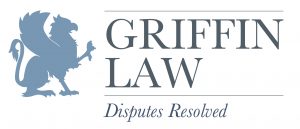In the intricate landscape of intellectual property (IP) law, trademarks and copyright stand as pillars of protection for creators and businesses alike. In England, as in many jurisdictions, both trademarks and copyright serve distinct yet complementary purposes in safeguarding intellectual assets. Understanding the nuances and differences between these two forms of protection is crucial for individuals and businesses seeking to secure their rights and enforce them effectively. This article aims to elucidate the key distinctions between trademarks and copyright law in England, exploring their respective scopes, requirements, and enforcement mechanisms.
Trademarks
Trademarks serve as identifiers of the source of goods or services, distinguishing them from those of competitors. In England, trademark protection is governed primarily by the Trademarks Act 1994 and supplemented by European Union legislation, although changes following Brexit may have implications on EU trademark registrations. A trademark can consist of words, logos, symbols, or a combination thereof, provided it is capable of being represented graphically and is capable of distinguishing the goods or services of one undertaking from those of others.
Key aspects of trademarks in England include:
Registration: While registration of a trademark is not mandatory, it provides significant benefits, including exclusive rights to use the mark in connection with the specified goods or services. Registration is obtained through the Intellectual Property Office (IPO), following examination to ensure compliance with legal requirements.
Protection: Registered trademarks grant their owners the exclusive right to use the mark in the course of trade and to prevent others from using identical or similar marks in connection with identical or similar goods or services without authorization. Trademark protection can endure indefinitely, provided the mark is renewed every ten years and remains in use.
Enforcement: Trademark infringement occurs when a third party uses a mark that is identical or similar to a registered trademark in a manner that causes confusion among consumers. Remedies for infringement include injunctions, damages, and orders for the destruction of infringing goods.
Copyright
Copyright law protects original literary, artistic, musical, and dramatic works, as well as sound recordings, films, and broadcasts. In England, copyright is primarily governed by the Copyright, Designs and Patents Act 1988 (CDPA), which outlines the rights of creators and the limitations on those rights.
Key aspects of copyright in England include:
Creation: Copyright protection arises automatically upon the creation of an original work, without the need for registration or formalities. The work must possess a degree of skill, labour, and judgment and must be recorded in a tangible form, such as writing, recording, or digital file.
Rights: Copyright grants creators exclusive rights to reproduce, distribute, perform, and adapt their works. These rights typically endure for the lifetime of the author plus 70 years after their death, although durations may vary for different types of works and circumstances.
Infringement: Copyright infringement occurs when a third party without authorisation reproduces, distributes, performs, or adapts a substantial part of a copyrighted work. Exceptions and limitations to copyright exist, such as fair dealing for purposes of criticism, review, or news reporting.
Conclusion
While trademarks and copyright serve distinct purposes, there may be instances where their protection overlaps. For example, a logo may be protected both as a trademark and as an artistic work under copyright law. However, the scope of protection and the requirements for enforcement differ between the two regimes. Trademarks focus on protecting the commercial identity of goods or services, whereas copyright safeguards the expression of original ideas.
In England, trademarks and copyright law play integral roles in protecting intellectual property assets, offering creators and businesses avenues for safeguarding their rights and commercial interests. Understanding the differences between trademarks and copyright is essential for effectively navigating the complexities of IP law, ensuring adequate protection and enforcement strategies are in place.
As the landscape of intellectual property continues to evolve, staying abreast of legal developments and seeking professional guidance can help stakeholders optimise their IP portfolios and mitigate risks effectively.
Griffin Law is a dispute resolution firm comprising innovative, proactive, tenacious and commercially-minded lawyers. We pride ourselves on our close client relationships, which are uniquely enhanced by our transparent fee guarantee and a commitment to share the risks of litigation. For more details of our services please email justice@griffin.law or call 01732 52 59 23.
GRIFFIN LAW – TRANSPARENT FEES. TENACIOUS LAWYERS. TRUSTED PARTNERS.
Nothing in this document constitutes any form of legal advice upon which any person can place any form of reliance of any kind whatsoever. We expressly disclaim, and you hereby irrevocably agree to waive, all or any liability of any kind whatsoever, whether in contract, tort or otherwise, to you or any other person who may read or otherwise come to learn of anything covered or referred to in this document. In the event that you wish to take any action in connection with the subject matter of this document, you should obtain legal advice before doing so.



